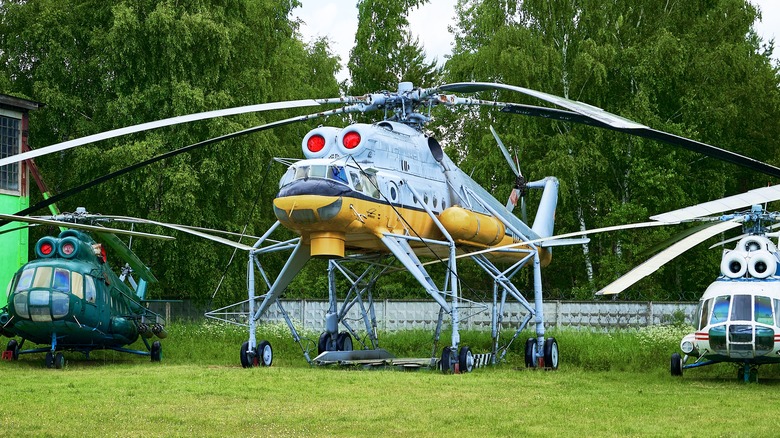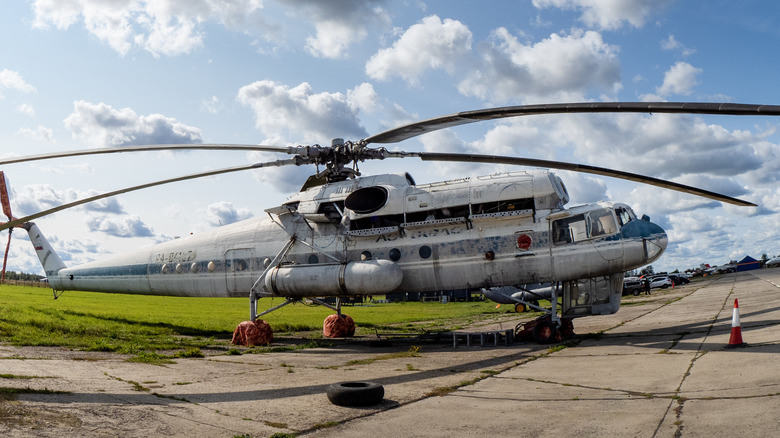Soviets' Strange Flyer: The History Of The Crane Helicopter Mi-10
The Soviets produced all sorts of strange vehicles during the Cold War. It even developed a space motorbike that appeared to be ripped straight out of "Star Trek." With tensions growing with the West, it's no surprise that the Soviets were also eager to develop new military vehicles, one of which is particularly strange.
First demonstrated in July of 1961, the Mil Mi-10 was the world's largest helicopter. Towering at a height of 25.6 feet, a length of 137 feet, and a main rotor diameter of 114.8 feet, this behemoth of a helicopter, dubbed the "flying crane," looked like an oversized locust with its long four-legged landing gear. The helicopter was based on the Mi-6 but featured a smaller, narrower fuselage and a deeper tail boom.
Powered by two 5,500-horsepower Soloviev D-25V turboshaft engines, this helicopter could deliver 3,500 shp to the propeller. Although it could accommodate 28 passengers, that's not what this helicopter was best known for hauling.
Viable for military and civil use
Using a winch, the Mil Mi-10 could lift 15 tons and travel at 120 mph fully loaded. Immediately after unveiling, the helicopter set the load-to-altitude world record at 33,000 pounds at 7,631 feet. But it was unique in another way as well.
The Mil Mi-10's long legs allowed a platform to be fastened at the wheelbase to hold large cargo of up to 12 tons. This allowed it to carry items such as full-size vehicles and even pre-fabricated buildings into hard-to-reach areas. In what undoubtedly was a handy feature, the helicopter could taxi over the target and connect the platform carrying the load via hydraulic fasteners to take on a payload. And if what was being transported was a car, the platform didn't need to be removed upon landing as the vehicle could just drive off it.
In 1966, a modified version of the Mi-10, the Mi-10K debuted. This variant was designed for civil use, weighing less and sporting shorter legs. Uniquely, at the bottom of the craft was a glass cockpit where a crane could be operated. When working in construction, this was useful in picking up heavy loads and accurately putting them down. The Mi-10K was used for various tasks, such as installing electric line support and building skyscrapers in Moscow.
What may surprise you is that 55 Mil-10s are still in service in Russia. This places the "flying crane" among the oldest military helicopters in service today.

